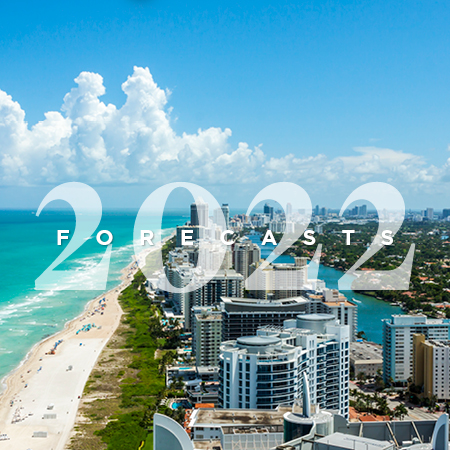There was a strong rebound in European commercial and residential investment volumes in 2021, despite ongoing pandemic-related disruptions. We expect volumes to be €290bn at the end of 2021, which is a 10% year-on-year increase. There is no reason why transaction activity will not be similar for 2022.
An increase of overseas buyers seeking European real estate is, and will continue to be, part of strong investment activity. Cross-border investment gathered momentum during 2021, as buyers from the US, Canada, Singapore and the Middle East returned. Unless Omicron necessitates travel restrictions, the mix of investors in the region will become ever-more diverse in the coming months.
A priority for investors in Europe will be finding quality assets, leading to further polarisation between prime and secondary property.
Net zero is going to be the main priority this year and in the coming years. Investors will focus on measuring their assets carbon footprint to identify underperforming buildings and improve energy performance. This can bring value-add opportunities in the market. Other opportunities may emerge from the need to improve the performance of operational real estate, meeting the expectations of occupiers and successful branding.
The office sector has survived Covid as the largest and most liquid sector. Hybrid working patterns may well be part of the norm, but the importance of the office for collaboration, innovation and corporate culture remains vital.
The change, however, is in what occupiers expect from their offices. They are demanding better office design that is focused around wellbeing, improved environmental performance and social value. Such assets will command higher rents, while older assets in good locations that can be refurbished in these respects will present value-add opportunities.
It is still too early to determine precisely the extent of the ‘Covid’ factor in the retail, logistics and office markets. Either way, the Covid crisis will have served to highlight the metamorphosis of these markets, which was already underway before the pandemic.
We expect greater portfolio diversification in the years to come, in terms of assets, locations and strategies. Logistics and living sectors will remain highly sought after in 2022. The demand and supply imbalance in both sectors is pushing up rental levels and forcing investors that cannot access stock into forward-funding strategies.
Student housing, senior living and care homes are now a mainstream core product in core markets, though still niches in terms of investment volumes. Strong yield compression for these asset types will push investors further into alternatives. Already hospitals, universities, data centres, life sciences and urban farming are on the investment radar.
Across all sectors (except shopping centres and high streets) on average prime yields hardened further in 2021. These pricing levels are sustainable for the best assets, which we expect to experience positive rental growth due to the slowdown in new supply. While rent corrections and some further moving out of yields are anticipated in the shopping centres and high streets.
2022 Europe Tips
- Prime offices with high EPC ratings in cities with dynamic economies, low vacancy rates and solid occupier demand such as London, Paris, Berlin, Munich, Stockholm and Amsterdam.
- State of the art logistics facilities in markets with high e-commerce penetration and established 3PL operators and online retailers such as UK, Netherlands and France.
- Stabilised, newly-built multifamily assets in major cities with large and rising populations such as London, Paris, Berlin, Frankfurt, Amsterdam, Stockholm and Copenhagen.
- Large supermarkets in accessible locations with strong catchment areas let to established, strong performing food retailers across all European capital cities.
- Multifamily properties in tier 2 cities in countries with high demand for rental such as Germany and the Nordics.
- Last mile logistics in densely-populated areas.
- Student housing in large university cities with low supply of professionally managed student accommodation in Spain, Italy, Poland, and Germany.
- Well-located offices with energy performance upgrade potential in cities with demand and supply imbalances such as German cities, Amsterdam, Paris, London, Stockholm.
- Hospitality in established tourist destinations where visitor flows are expected to rebound strongly post-Covid such as Southern Europe and key city break destinations (Italian cities, Prague, Amsterdam, Paris).
- Prime retail parks in well-connected locations with strong catchment areas across capital and regional cities in Europe.
- Multifamily development in partnership with local developers in secondary cities in countries with strong regional urban centres such UK, Germany, France and Poland.
- Corporate warehouses for manufacturing and storage as a result of nearshoring trends in Eastern European and Balkan countries.
- Retail centres in need of active asset management in well-connected locations with strong catchment areas and high disposable incomes in the UK, Germany, France, Spain and the Nordics.
- Logistics development in countries with low but fast growing e-commerce penetration in Southern and Eastern Europe.
- Eco-friendly hospitality developments with focus on wellbeing in unique locations that benefit from high speed train connectivity for environmentally cautious travellers in countries such as France, Spain, Germany, Benelux and Italy.
- Retrofitting and repurposing of assets across sectors and geographies.
- Data centres in all large urban centres with solid manufacturing, healthcare and financial services GVA prospects or with major digital infrastructure network to be delivered soon.
- Healthcare in countries with ageing populations or with a low level of bed per inhabitants (care homes and hospitals) such as Germany, UK, France, Spain, Italy, Ireland.
- Life science facilities in research and development hubs such as the UK’s golden triangle, Randstad and Paris-Saclay.




